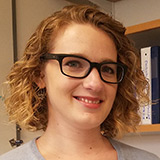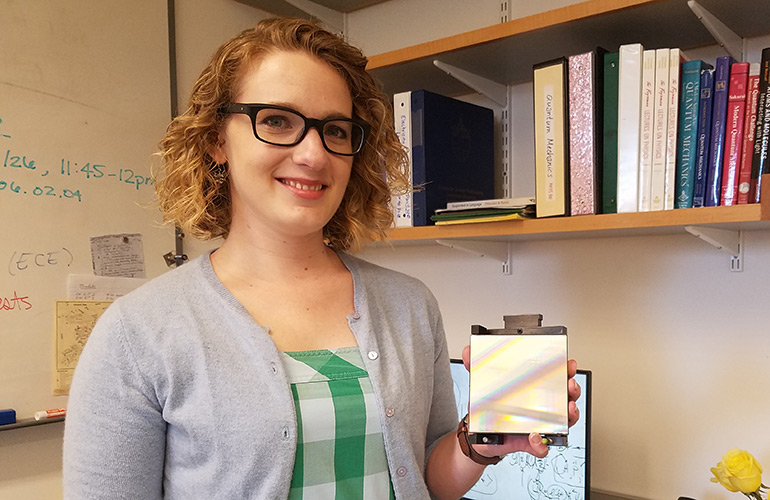Notice of Online Archive
This page is no longer being updated and remains online for informational and historical purposes only. The information is accurate as of the last page update.
For questions about page contents, contact the Communications Division.

Assistant Professor of Physics
Ph.D., physics, University of Pennsylvania
What I’m teaching:
Quantum Theory; Electricity, Magnetism, and Waves
What I study:
“I do condensed-matter physics with a focus on optics. What I really love is looking at how light interacts with materials. I just think that light is the coolest thing because there is what we see every day—white light—but then you can split it up into different colors of the rainbow. It turns out that light interacts with matter and materials in a lot of really interesting ways that have a lot of implications toward devices or technology that we use every day and that we will use in the future. If you think about a screen—a phone screen, TV screen, or computer screen—those are made up of pixels, which are made up of the primary colors of light. The light gets combined in different ways to render all the colors that we see on the screen. In my research, I look at defects in crystals. If you think about a diamond, that’s carbon atoms. If you replace some of those carbon items with some nitrogen atoms, then the diamond looks yellow. Blue diamond has boron atoms. By adding defects, you can change the properties of a material. And I’m interested in that.”
What drew me to Lafayette:
“I went to a liberal-arts school [Lawrence University], so that made Lafayette appealing to me. I’m really excited about being here. I’m thrilled about the big STEM focus and the interdisciplinary opportunities. My research has a lot of applications in engineering, biology, and chemistry. I’m really excited about the idea of collaborating with other departments and incorporating different fields into my work.”
What students can expect:
“I think it’s really important for students to be able to put physics in the broader context. The math is really important, the derivations are really important. You need to know how to derive this stuff, but that’s not enough. You need to know how to apply it—and beyond just physics. You need to know how to apply it to solve a chemistry problem and an engineering problem. So that’s what I hope that students will gain from my classes: The way physics fits into the broader context of what they are studying and the broader context of the world.”

What I’m holding:
“This is a diffraction grating. It’s an array of very finely spaced lines that takes light and splits them up into several beams of all the constituent colors. The white light comes in and gets split up—kind of like prism. It’s the mainstay for someone who does research in optics. By looking at the constituent colors that come off an object, it tells me a lot about the electronic structure and the material.”
What’s not on my CV:
“I played soccer in college, and I still like to play when I can. I’ve been playing in adult leagues since college. I also love bright colors and fresh flowers. I often have them in my office and lab.”
Categorized in: New Faculty,
Physics

